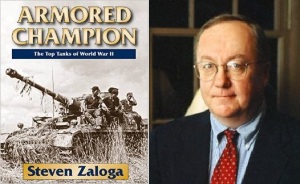World of Tanks researcher Nicholas Moran recently gave a lecture on the Design & History of the M4 Sherman Tank at the New York Military Affairs Symposium. The entire presentation was recorded by C-Span. The lecture is a little over an hour with a half hour Q&A at the end. As can be expected from Nick Moran, its a quality lecture. Some of the Q&A questions are a bit goofy (why is that guy bringing up Smedley Butler?), but that’s generally how these sorts of things go.
You can view the lecture at the C-Span website here or click on the image below.













